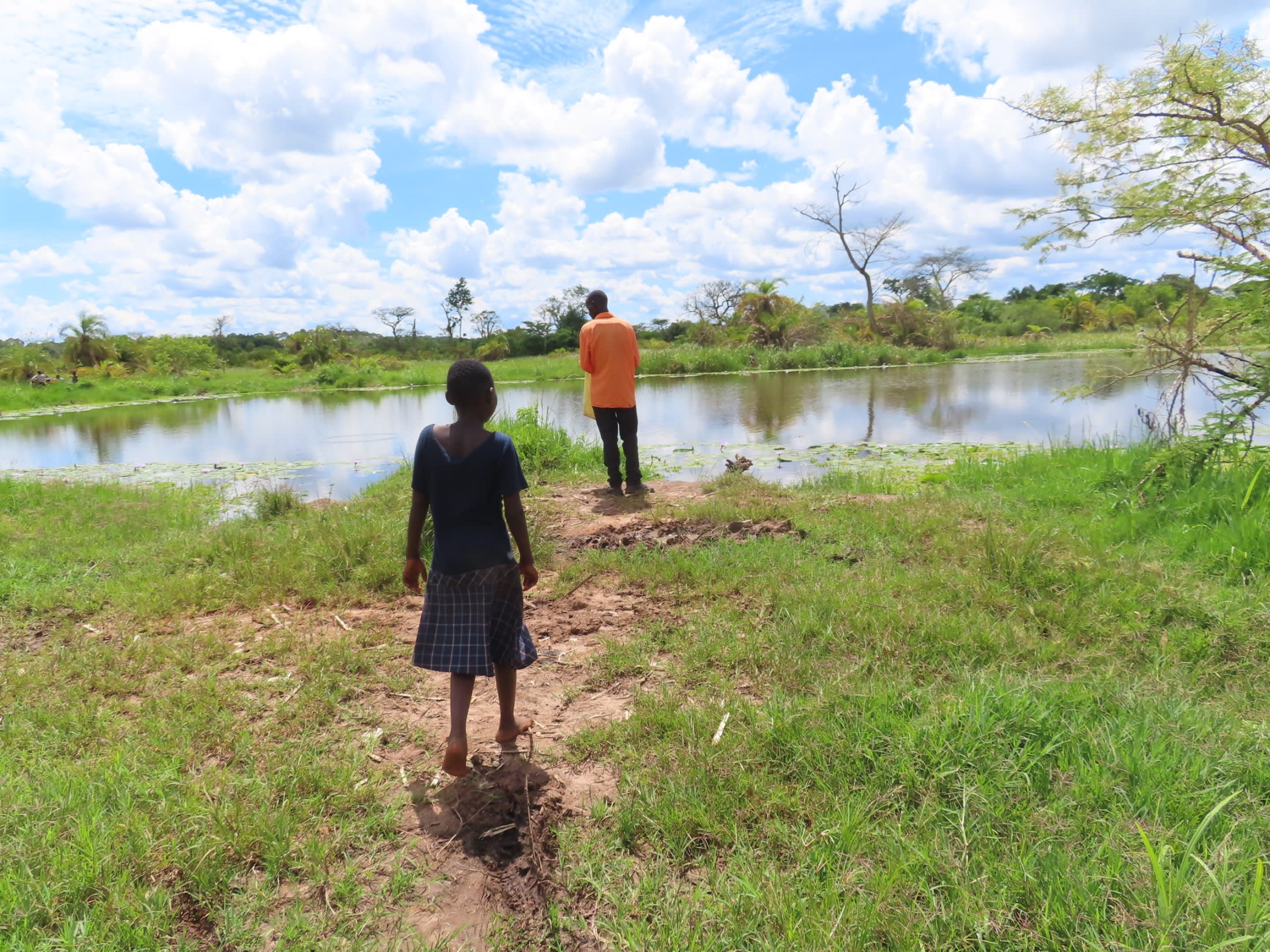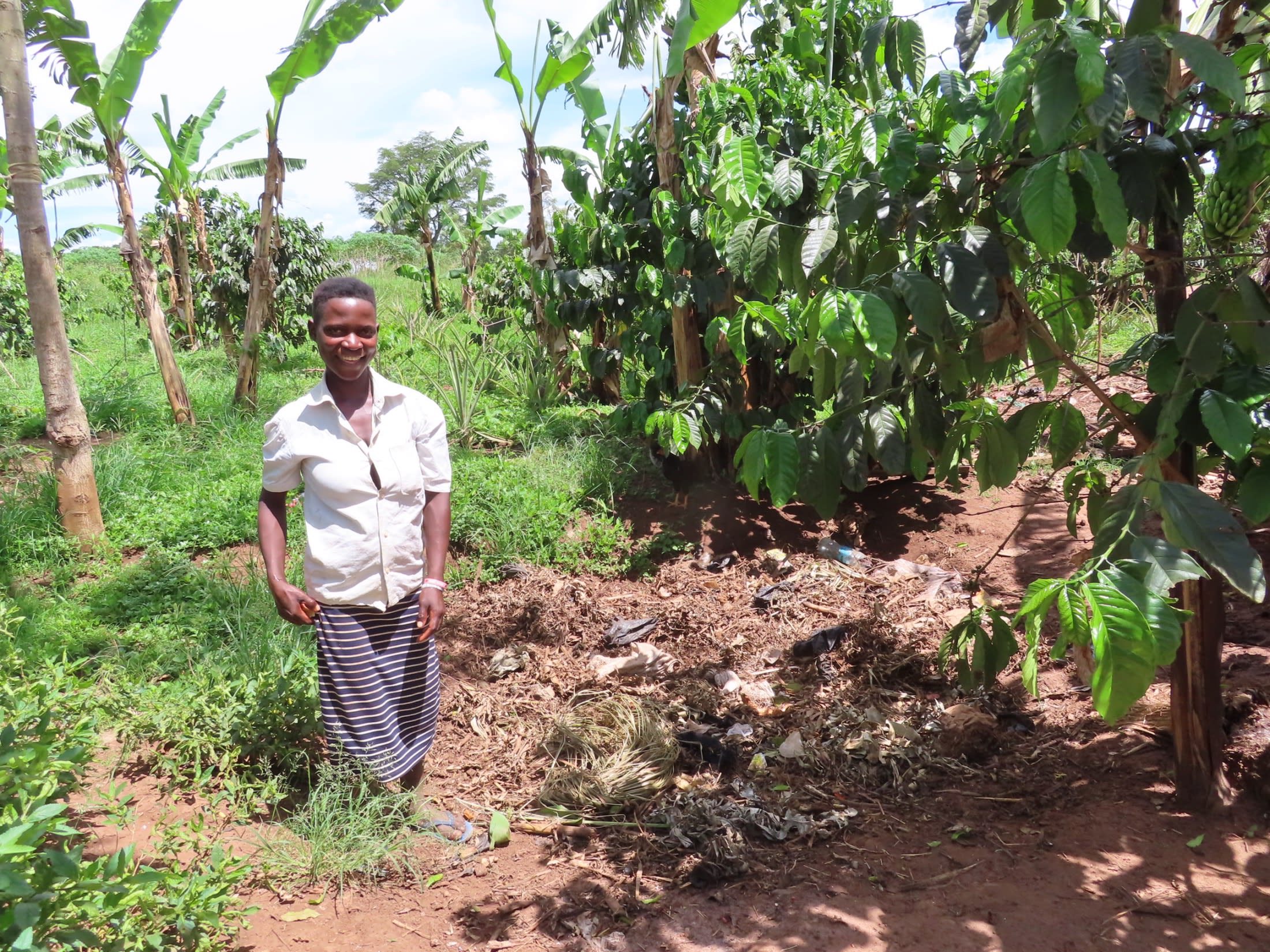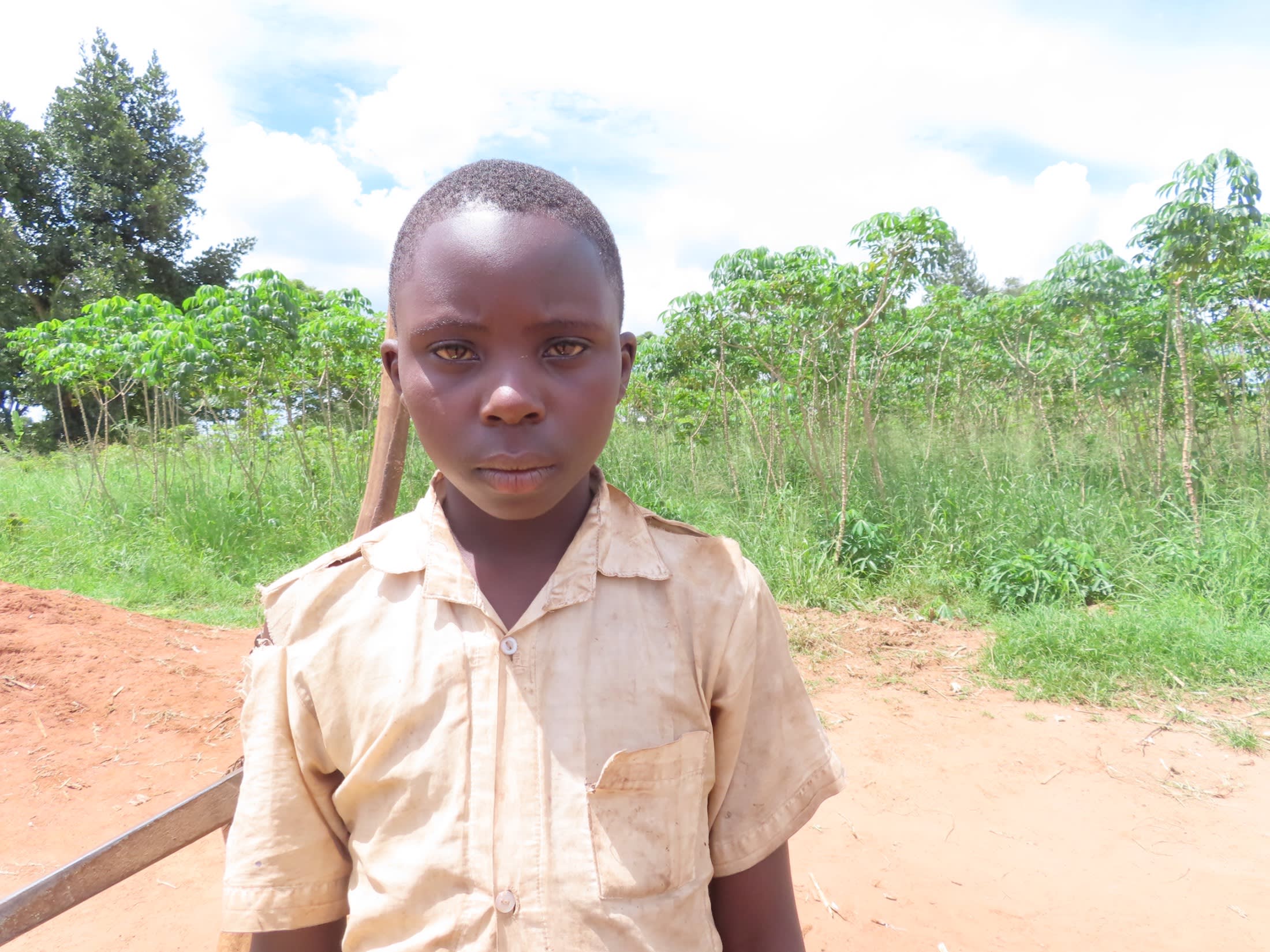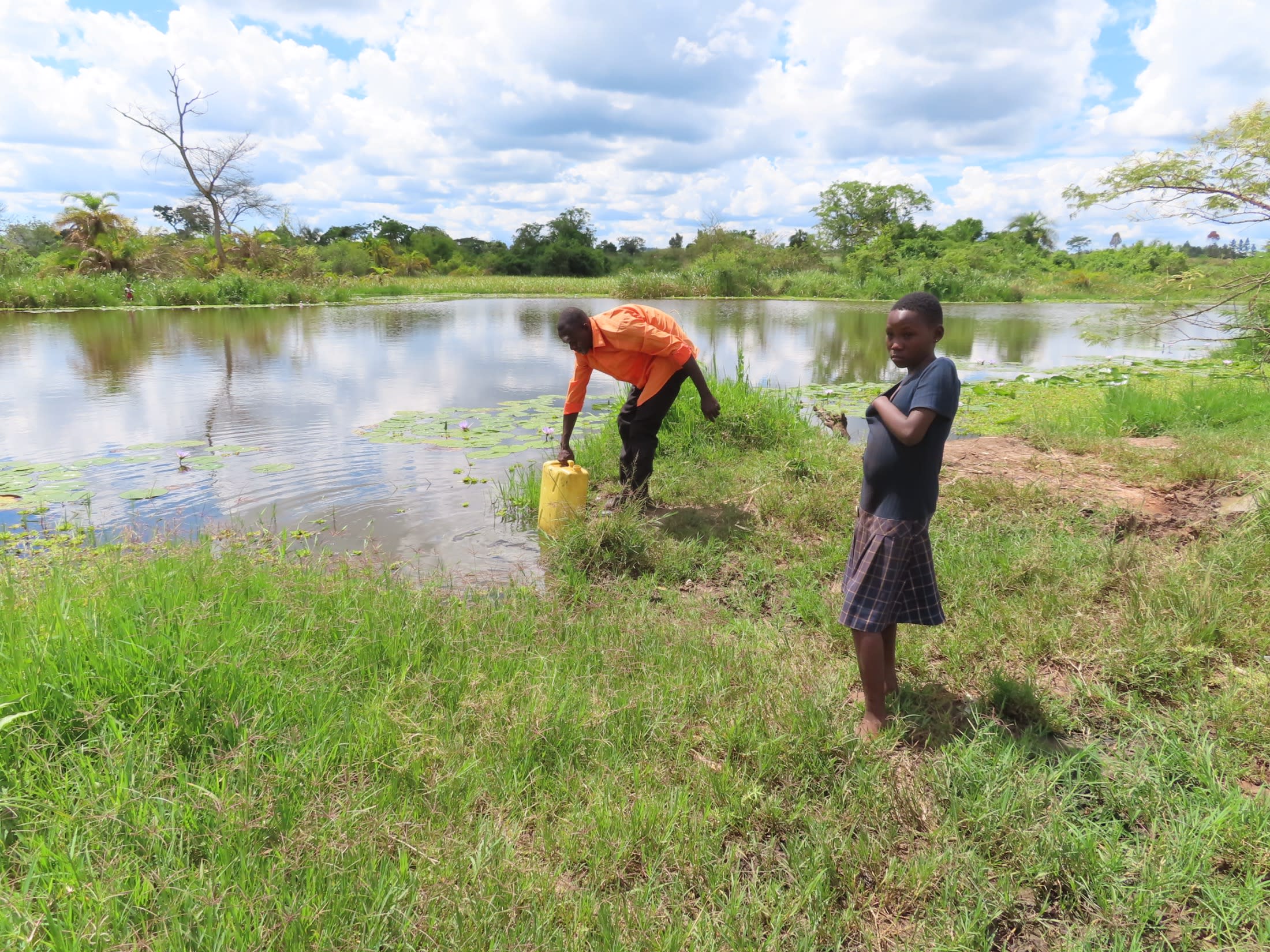This area is flat with very fertile soil. There are plenty of sugar cane plantations and fields of beans, maize, and cassava. The most common livelihoods are farming sugarcane and food crops and raising cattle.
The community is located near one of the biggest trading centers within the district, which has enabled them to access better quality services compared to other communities. Although, their biggest challenge remains access to enough clean and safe drinking water.
The borehole is used by over 300 people daily, including community members, children, and staff of the nearby school, and many from the neighboring villages of Kikingura, Kyamaiso, and Kyandangi. It is always overcrowded, leading to frequent breakdowns. The pump has worn-out parts with leaking pipes and rods making it hard to pump the water without several strokes.

When people can not wait in line or access water from the borehole due to breakdowns, the alternative water source is a nearby contaminated watering hole shared with animals near the dam that leads to diarrhea-related illnesses.
Rehabilitating this water point will reduce the frequent breakdowns, the time wasted looking for clean water, and community members settling for an unsafe alternative.

Teddy, a young mother, said, "I always wake up very early in the morning to collect water, but to my disappointment, I find people already at the water point. This disorganizes my daily schedules, and I end up going to the gardens late. I don't do much in the gardens as I have to come back home and prepare lunch for my husband. Lunch is always served late, and sometimes my husband goes back to his business without food. I have also resorted to using the dam water, which is always shared with animals in an attempt to catch up with time."

"I usually collect water in the evenings after school and use it for bathing and washing my uniforms. However, I always find long queues, and the bigger boys struggling to collect water delay me. My mum quarrels with me, and I end up not washing my uniform, or else I wash, and it does not dry. I end up wearing wet uniforms when I go to school the following day," said Joshua, a pupil from Kikingura Primary School.
Here’s what we’re going to do about it:
Rehabilitated Well
We are going to restore water to the broken-down borehole. Since this water point is located at the center of the village and easily accessible by the majority of people, unlike the springs which are located at the far ends of the village, when this borehole is restored to its original status, it will provide the community with easy access to clean and safe water. We will remove the old pump, clear out the well, reinstall a new stainless steel pump, and build a new well pad to protect the water.
Training
Training’s main objectives are the use of latrines and observing proper hygiene practices since these goals are inherently connected to the provision of clean water. Open defecation, water storage in unclean containers, and the absence of handwashing are all possible contaminants of a household water supply. Each participating village must achieve Open Defecation Free status (defined by one latrine per household) before the pump installation for a shallow hand-dug well.
This social program includes the assignment of 1 Community Development Officer (CDO) to each village. The CDO encourages each household to build an ideal homestead that consists of a latrine, handwashing facility, a separate structure for animals, a rubbish pit, and a drying rack for dishes.
We also implement the Community-Led Total Sanitation (CLTS) approach with each of our village partners. This aims to improve the sanitation and hygiene practices and behaviors of a village. During these sessions, village leaders naturally emerge and push the community to realize that the current practices of individual households – particularly the practice of open defecation – are unhealthy and affect the entire village. CLTS facilitates a process in which community members realize the negative consequences of their current water, sanitation, and hygiene behaviors and are inspired to take action. Group interactions are frequent motivators for individual households to build latrines, use the toilets, and demand that other families do the same.
Improved Sanitation
The aim is that all households own an improved latrine. Many families do not use a toilet but use the bush. Due to open defecation, feces are spread all over the village. This leads to waterborne diseases and contamination of groundwater and surface water. Our aim is that the community can live a healthy life free of preventable diseases. We endeavor that people will have both access to sustainable, clean water and access to sanitation at the end of our presence in the community. We have now organized families to form digging groups for latrine construction and empowered them with the tools they will need.

 Borehole Well and Hand Pump
Borehole Well and Hand Pump






























